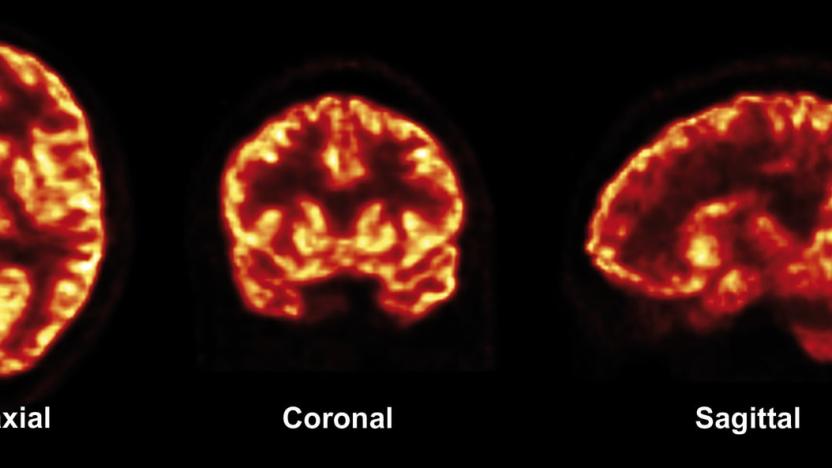BrainDisease
Latest

New imaging method reveals how Alzheimer's reshapes the brain
Researchers at Yale University have led development in to a new type of brain scan designed to detect changes in synapses associated with common brain disorders. Until now, researchers have only be able to detect these changes during autopsies, but by combining a Positron Emission Tomography (PET) scan with a new type of injectable tracer, Yale radiology and biomedical imagining professor Richard Carson was able to measure the synaptic density in a living brain. According to the findings published in Science Translational Medicine Wednesday, the technique could help doctors better understand and treat a wide range of neurological conditions from epilepsy to Alzheimer's disease.

Optogenetics hold the key to future brain disease cures, still creep us out
Those mad neuroscientists, they'll never learn, but maybe in the end we'll all be better off for it. Wired has put together an extremely intriguing write-up of the short history of optogenetics -- featuring a German pond scum researcher, a Nobel Prize winner, and rat brains controlled by beams of light. Optogenetics is a relatively new technique for communicating with the brain, which involves the implantation of particular light-sensitive genes into animals with the purpose of repairing neurological ailments through light therapy (no, not that kind). By hooking up fiber-optic cables to the affected area of the brain, researchers have been able to completely restore movement in mice with Parkinson's disease and their current efforts revolve around developing a less invasive method that doesn't go deeper than the outer surface of the brain. Most revolutionary of all, perhaps, is the eventual possibility for two-way traffic (i.e. a machine being able to both send and receive information from the brain), which brings all those cyborg dreams of ours closer to becoming a reality than ever before. Hit up the read link for the full dish.